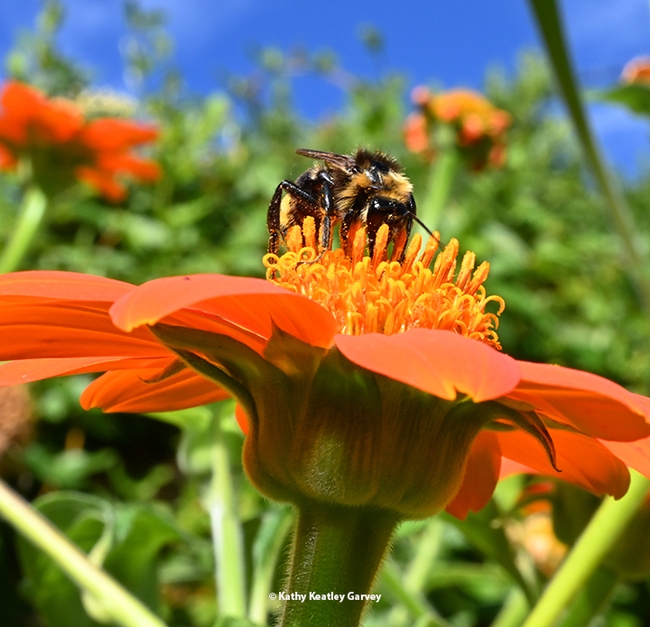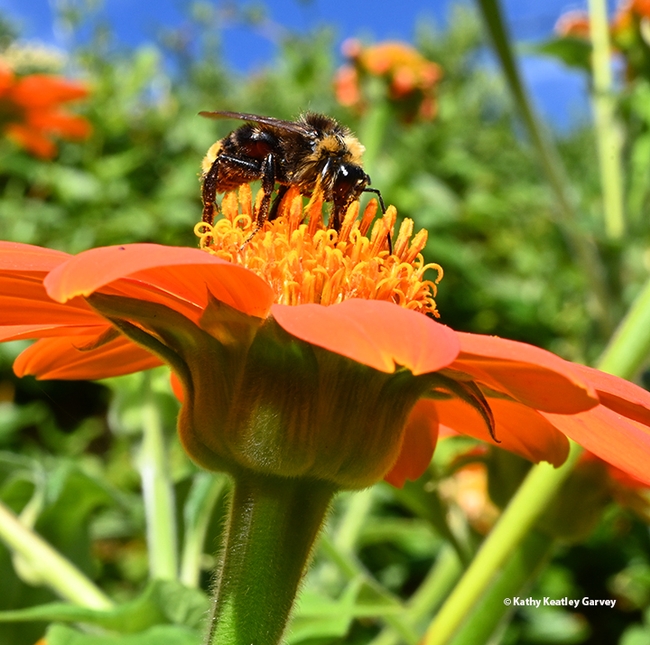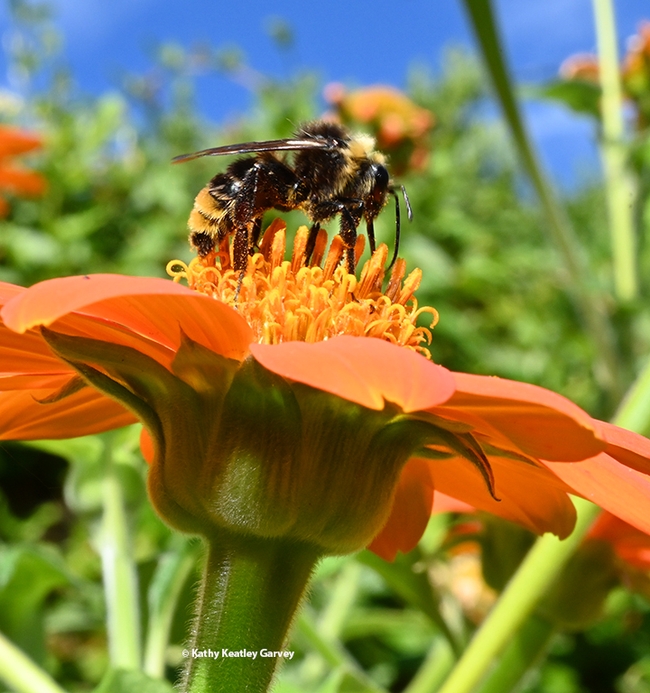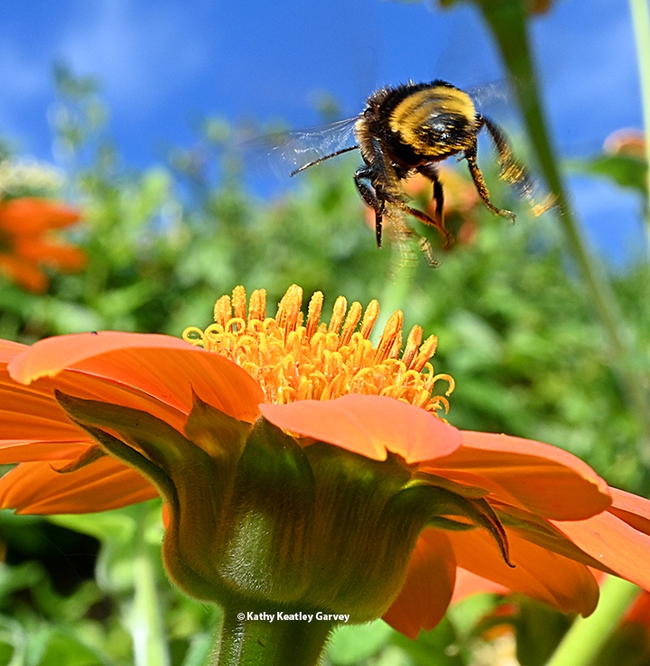A perfect match: a bumble bee foraging on a Mexican sunflower, Tithonia rotundifola.
Lately we've been observing a bumble bee, identified as a California bumble bee, Bombus californicus, sipping nectar from the colorful orange blooms in our Vacaville pollinator garden.
B. californicus is one of 27 bumble species recorded in California, according to the four University of California authors of California Bees and Blooms: A Guide for Gardeners and Naturalists, published in 2014 by Heyday. Gordon Frankie, Robbin Thorp, Barbara Ertter and Rollin Coville co-authored the book. Thorp (1933-2019), distinguished emeritus professor, UC Davis Department of Entomology and Nematology, also co-authored Bumble Bees of North America: An Identification Guide, published in 2014 by the Princeton University Press.
Worldwide, there are 250 species in the genus Bombus. The most common bumbles we see are the yellow-faced bumble bee, B. vosnesenkii; the black-tailed bumble bee, B. melanopygus; and the California bumble bee (no yellow hairs on its face).
In California, bumble bees "are most common and diverse in the North Coast and Sierra-Cascade ranges," the authors wrote. They identified a total of 10 in urban gardens, but only three (the ones we see) are common.
"The ability of bumble bees to buzz-pollinate certain high-value crops, such as greenhouse tomatoes, has led to recent introductions from Europe to many areas of the world where they previously did not exist, especially B. terrestris, the Large Earth Bumble Bee."
If you spot a bumble bee in California, the California Bumble Bee Atlas wants to know. "Launched in 2022, the California Bumble Bee Atlas is a collaborative community science effort to track and conserve the state's native bumble bee species," according to its website. ? The group is hosting a Bumble Bee Atlas Survey Bio Blitz July 28-30. Check out the Facebook page.
You can also load your images on iNaturalist.
Attached Images:

A bumble bee, identified as a male Bombus californicus, foraging on Mexican sunflower, Tithonia rotundifola, in a Vacaville garden. (Photo by Kathy Keatley Garvey)

A male California bumble bee, Bombus californicus, peeks through the flower. (Photo by Kathy Keatley Garvey)

Over here is better. A male Bombus californicus foraging on a Tithonia rotundifola. (Photo by Kathy Keatley Garvey)

The male California bumble bee, Bombus californicus, takes flight. (Photo by Kathy Keatley Garvey)